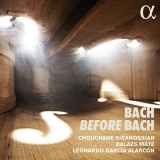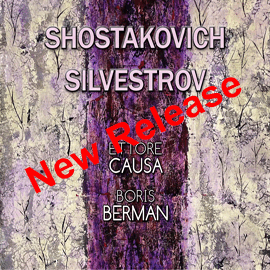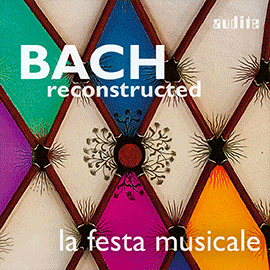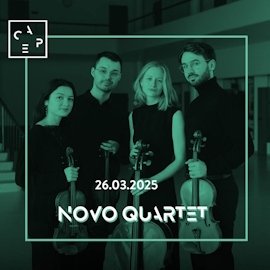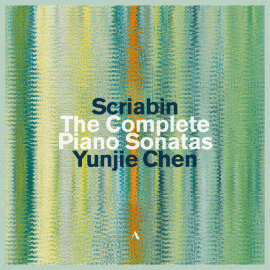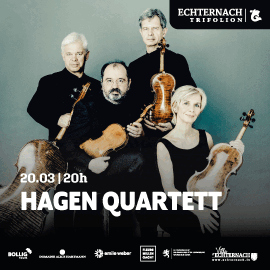Chouchane Siranossian und Leonardo Garcia Alarcon erkunden ein teils bekanntes, teils weniger bekanntes Repertoire und wollen, wie man hört, die neue Rhetorik der Instrumentalmusik vor und zu Bachs Zeiten erkunden.
Bachs Sonate BWV 1021 eröffnet das Programm. Chouchane Siranossian geht den ersten und den dritten Satz, die beiden langsamen also, sehr poetisch und zurückhaltend an und lässt im fesselnden Kontrast dazu die beiden schnellen Sätze explosiv dramatisch folgen.
In Carlo Farinas kurzer Sonata Quinta und in Johann Gottfried Walthers Passacaglia erreicht die Violinistin eine Belebung der Materie mit Nuancen, Farben und kontrastreichem Duktus.
In den beiden Sätzen aus BWV 1024 und 1026 weiß Chouchane Siranossian, wie man diese zarten Gebilde mit ihrem vulkanischen Inneren anfasst, wann und wo Rubati passen, wo Farbtupfer und Akzente Sinn machen, wo das Spiel der Dynamik Bedeutung erlangt.
Wunderbar ausdrucksvoll ist auch der selig wiegende erste Satz der Sonate von Muffat, der aber immer wieder durch dramatische Gestik aufgelockert wird. Auch in den übrigen Sätzen sind die Kontrastierung und die Spontaneität des Spiels frappant. Ein Vergleich mit anderen Aufnahmen zeigt auf welche Höhe Siranossian diese Sonate hebt, mit welcher Intonationssicherheit und technischer Souveränität sie diese eigentlich sehr schwere Komposition spielt, an der schon etlicher andere Interpreten gescheitert sind. Vergleichbares gibt es nirgends!
Mit der Bach-Sonate BWV 1023 erreichen die Interpreten eine neue Stufe ihres Zusammenspiels. In dieser Sonate verlangt Bach von beiden Musikern die gleiche Virtuosität, den gleichen Schwung. Chouchane Siranossian und Alarcon legen mit dieser Aufnahme eine der lebendigsten und tiefgründigsten Interpretationen vor, die ich kenne. Die Musik entwickelt sich dennoch frei und spontan, der Puls ist unablässig vorhanden, die Phrasierung ist klar und strukturiert. In Siranossians ausdrucksvoll rhetorischem Spiel wirkt nichts unbegründet, man hat auch nie den Eindruck des Recherchierten. Ihr Zusammenspiel mit Balasz Mate und Alarcon ist beglückend.
Es folgt das kurze lautmalerische Stück Imitatione delle Campane, in dem sich die ‘Glockenschläge’ des Cellos mit den Arpeggi der Violine vermischen.
Die CD endet eminent dramatisch mit Andreas Anton Schmelzers Victori der Christen, und die spannende Interpretation zeigt die Fülle und Klangfülle, die Schmelzer in seiner Musik mit für jene Zeit waghalsiger harmonischer Akrobatik und unerhörten Klangeffekten erreichte.
Gerade bei diesem Werk aber zeigt sich ganz besonders der Mangel an Information im Booklet. Es gibt darin zwar ein interessantes Interview mit Siranossian und Alarcon, aber keinerlei Angaben zu den Werken. Am schlimmsten ist wohl, dass die nur mit einem Track versehene Schmelzer-Sonate auch ohne die doch wichtigen Satzbezeichnungen angekündigt wird (Der Türken Anmarsch, Der Türken Belagerung der Stadt Wien, Die Türken stürmen, Anmarsch der Christen, Treffen der Christen, Durchgang der Türken, Victori der Christen). Das ist ein unverzeihlicher Fehler des Labels Alpha, und wäre das musikalische Resultat der CD nicht so überlegen gut, hätte dieses Manko die CD ihre Supersonic-Auszeichnung gekostet.
Neben der herausragenden musikalischen Realisierung dieser CD ist auch die sehr großzügige Tonaufnahme zu erwähnen.
Chouchane Siranossian and Leonardo Garcia Alarcon explore a repertoire that is partly familiar and partly less so, and, by all accounts, aim to explore the new rhetoric of instrumental music before and in Bach’s time.
Bach’s Sonata BWV 1021 opens the program. Chouchane Siranossian plays the first and third movements, the two slow ones that is, in a very poetic and restrained manner, and in captivating contrast, allows the two fast movements to follow in explosive drama.
In Carlo Farina’s short Sonata Quinta and in Johann Gottfried Walther’s Passacaglia, the violinist proposes a lively performance with nuances, colors and contrasting ductus.
In the two movements from BWV 1024 and 1026, Chouchane Siranossian knows how to play these delicate pieces with their volcanic interior, she knows when and where rubati fit, where splashes of color and accents make sense, where the play of dynamics takes on meaning.
The blissfully swaying first movement of Muffat’s Sonata is also wonderfully expressive, but it is always contrasted by dramatic gestures. In the other movements, too, the contrast and spontaneity are striking. A comparison with other recordings shows to what height Siranossian raises this sonata, with which perfect intonation and technical sovereignty she plays this actually very difficult composition, at which quite a few other interpreters have failed. There is nothing comparable anywhere!
With the Bach Sonata BWV 1023 the performers reach a new level of their interaction. In this sonata Bach demands the same virtuosity, the same drive from both musicians. Chouchane Siranossian and Alarcon don’t fail and present one of the liveliest and most profound interpretations I know. The music develops freely and spontaneously, the pulse is ceaselessly present, the phrasing is clear and structured. In Siranossian’s expressive rhetorical playing, nothing seems unfounded, nor does one ever have the impression of the researched. Her interplay with Balasz Mate and Alarcon is perfectly balanced.
The short onomatopoeic piece Imitatione delle Campane follows. Here the cello’s bell-like sound delightfully mingles with the violin’s arpeggi.
The CD ends dramatically with Andreas Anton Schmelzer’s Victori der Christen, and the exciting interpretation shows the fullness and sonority that Schmelzer achieved in his music with daring harmonic acrobatics and unheard-of sound effects for the time.
However, it is with this work that the lack of information in the booklet becomes particularly apparent. There is an interesting interview with Siranossian and Alarcon, but no information about the works. Worst of all, the one-track Schmelzer Sonata is announced without the important movement names (The Turks approach, The Turks’ siege of the city of Vienna, The Turks storm, March of the Christians, Meeting of the Christians, Passage of the Turks, Victory of the Christians). This is an unforgivable mistake by Alpha, and had the musical result of the CD not been so superiorly good, this shortcoming would have cost the CD its Supersonic award.
In addition to the outstanding musical realization of this CD, mention must also be made of the very generous sound recording.









